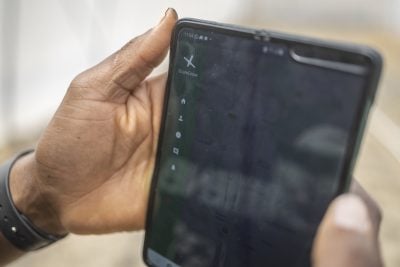2022 was a fruitful year for West African mobile money providers (MMPs). GSMA’s new state of the industry on mobile money report, published last week, shows that the region is now leading the way in mobile money growth, surpassing East Africa in the number of new accounts registered in 2022.
“Activity rates in West Africa increased consistently between 2018 and 2022 and are now approaching Sub-Saharan African activity rates,” the report says.
“Not only are more people registering for mobile money accounts, but many who have signed up are actively using mobile money for their everyday needs – more than users have in previous years.”
While East Africa has historically been the region with the highest mobile money adoption – mainly due to Kenya’s M-Pesa success story – West Africa now leads the way, not only continent-wide but also globally, as the region’s global share of registered mobile money accounts has risen from 11% in 2021 to 33% in 2022.
Countries such as Côte d’Ivoire, Ghana, and Senegal emerge as mobile money leaders in the region. The growth has also led to job creation, with 4m more registered agents entering the market in 2022, compared to 212,000 in East Africa.
Despite this growth, East Africa still accounts for the continent’s largest mobile money market, with transaction values worth $491bn for 390m registered accounts in 2022, compared to $277bn for 290m registered accounts in West Africa. But the impressive growth of mobile money in West Africa makes it the region with the highest potential for businesses.
Market liberalisation drives growth
Ease in regulation has played a key role in driving mobile money adoption in West Africa. Nigeria, for example, has seen steady growth in mobile money usage after introducing the payment service bank (PSB) license in 2018. The PSB licence, largely inspired by the Reserve Bank of India’s playbook, allows Nigerian mobile money providers to offer payments and remittance services, issue debit and prepaid cards, deploy ATMs and other technology-enabled banking services.
Similarly last year, Wave in Senegal became the first non-telco non-bank to receive an e-money license in the West African Economic and Monetary Union (WAEMU) region. Francophone Africa’s first unicorn, valued at more than $1bn in 2021, has obtained the licence only for the Senegalese market, but is looking for at expanding it to other WAEMU countries.
The report however outlines challenge that governments face in the regulation of mobile money services, including taxation and fraud.
“Some countries have introduced taxes on mobile money transactions and fees that do not align with their financial inclusion objectives. Fraud also remains an industry- wide issue, which many regulators are aiming to overcome through improved consumer awareness and capacity building,” it says.
High competition affects profit margins
An oversupply of mobile money providers brings worries of an overcrowded market in West Africa, with significant pricing pressures for existing businesses.
“With increasing competition and regulatory measures, such as taxation and zero rating, mounting pressure on pricing may impact profit margins for MMPs,” says the report.
The report notes that between 2021 and 2022, 11 mobile money services led by non-mobile network operators have closed on the continent. These include Yup, a mobile money service launched by French bank Société Générale, which ceased operations in seven markets.
According to a Société Générale statement, Yup was structurally unprofitable, partly due to the price war waged by more agile competitors.
The report highlights that increased competition forces mobile money services to look for alternative sources of revenues and business models if they want to reach profitability.
“Revenue diversification beyond customer fees enables MMPs to be more resilient to competitive and regulatory pressure on pricing,” the report says.
“At the product level, the 2022 Global Adoption Survey found a more diversified revenue profile than in previous years. As of June 2022, cash-out fees and domestic P2P [person-to-person] fees represented a combined 56% of overall provider revenue. While this number still accounts for most of the industry’s revenue mix, additional income streams are increasingly prevalent, particularly fees from bill and merchant payments, international remittances, and digital credit. This suggests there is significant potential for mobile money revenues to grow as ecosystem transactions increase.”
Related articles
Want to continue reading? Subscribe today.
You've read all your free articles for this month! Subscribe now to enjoy full access to our content.
Digital Monthly
£8.00 / month
Receive full unlimited access to our articles, opinions, podcasts and more.
Digital Yearly
£70.00 / year
Our best value offer - save £26 and gain access to all of our digital content for an entire year!

 Sign in with Google
Sign in with Google 



